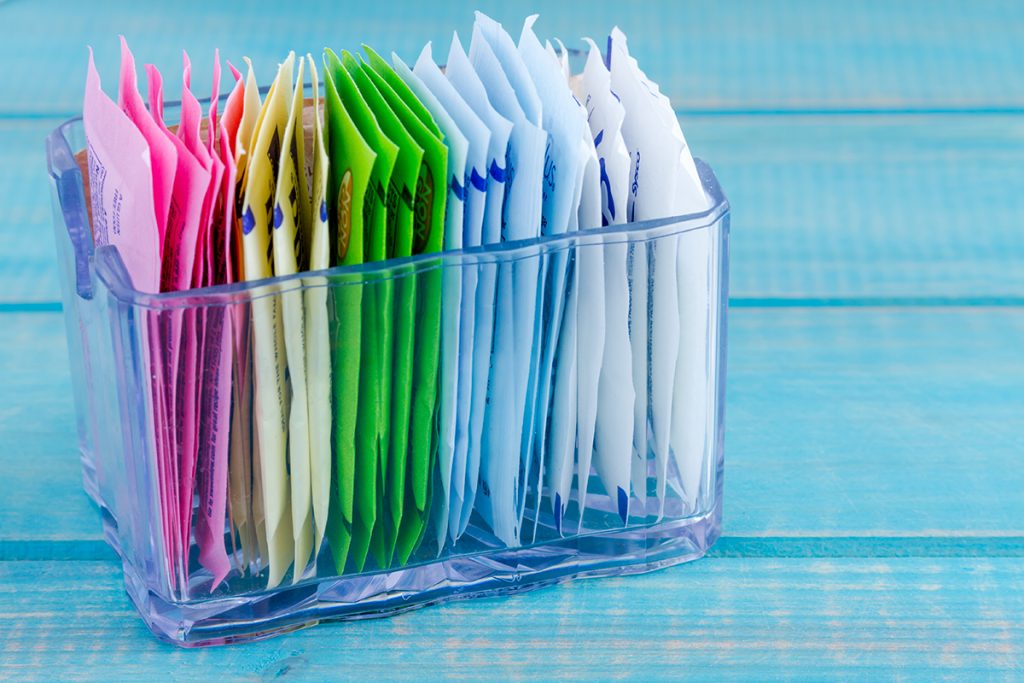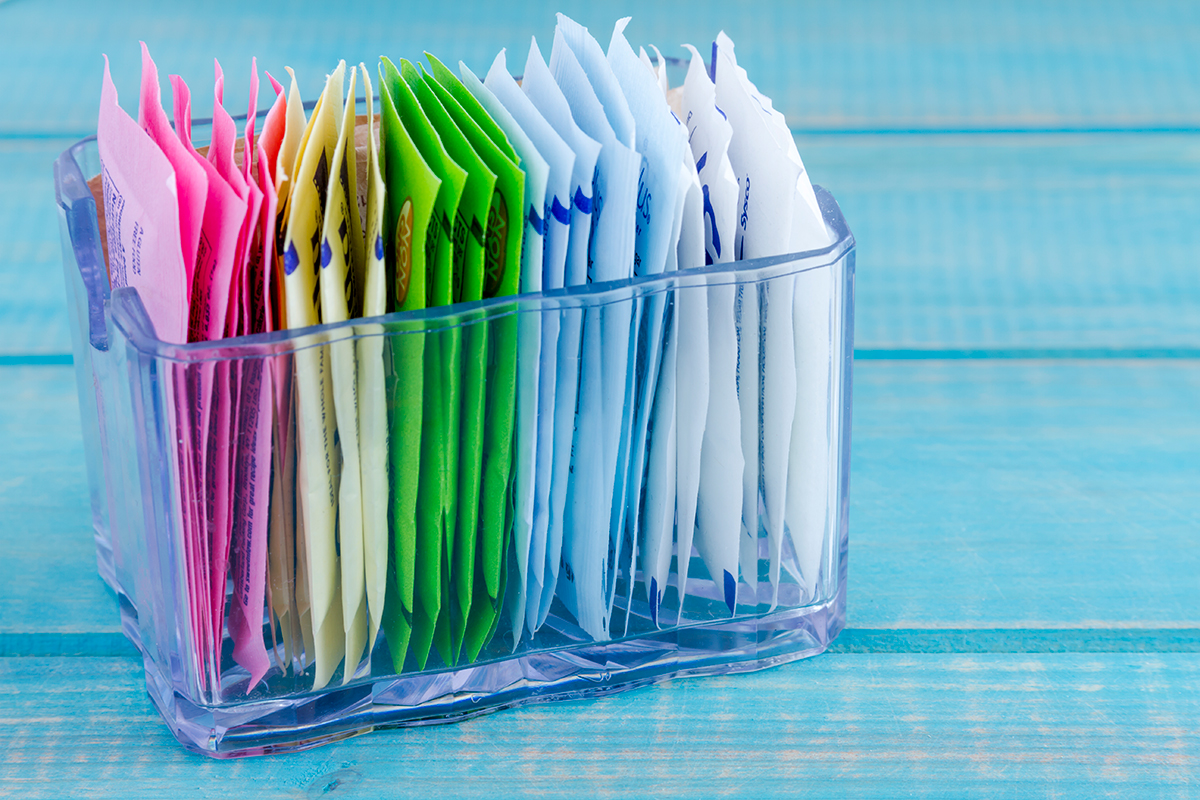The Not So Sweet Truth About Artificial Sweeteners
As of 2014, approximately 2.1 billion people – nearly one-third of the world’s population – are overweight or obese; with Americans tipping the scales at over 160 million. This includes nearly 75% of American men, more than 60% of women and over 30% of children under 20 years old (1).
It’s likely you know someone who may choose to regularly consume artificial sweeteners as part of their daily meal pattern in an effort to decrease total caloric intake in order to promote weight loss or manage their blood sugar (possibly you’ve tried them in the past as well). Are they the answer to the obesity epidemic and disease prevention? What are the differences in those different colored packets anyway?
 What are they?
What are they?
An artificial sweetener, or sugar substitute, is any food additive that provides a sugary taste, but has significantly less associated calories, or food energy (2).
Some sugar substitutes are derived from natural sources, like stevia and monk fruit, while others are synthetic, coining the term “artificial sweeteners”.
Because they can be 200-20,000 times sweeter than sugar, smaller amounts are needed to achieve the same level of sweetness.
There are currently six artificial sweeteners approved for use in the U.S. by the Food and Drug Administration (FDA) (3). Saccharin (including the brand Sweet’N Low® and packaged in pink packets) was the first to be discovered in 1878, and after a sugar shortage following WWI, the popularity and use of artificial sweeteners skyrocketed.
The remaining five include aspartame (found in blue packets like Equal®), sucralose (marketed under the trade name Splenda® in a yellow packet), acesulfame potassium (with a brand name of SweetOne® in a light blue sachet), neotame and advantame; which are not as commonly used.
Where are they found?
- diet sodas
- juices and other drinks
- reduced-calorie dairy products
- cereal
- condiments
- desserts and baked goods
- chewing gum
- toothpaste
- mouthwash
- lip balm
- medications and supplements
What are the risks?
While sucralose usage is possibly the greatest in the country (4), aspartame has been the most studied artificial sweetener.
To that point, although the FDA has said artificial sweeteners are generally recognized as safe (GRAS) for human consumption and the National Cancer Institute has concluded from research they are not linked to cancer (5), we still don’t really know if there are long-term health consequences to their use.
Sucralose may actually raise blood sugar and insulin levels, particularly in obese individuals who do not regularly consume artificial sweeteners (6). However, small research studies have determined it may not have an increased effect on people who already typically use them (7).
The CDC found that 67% of consumer complaints regarding aspartame in the 1980’s involved neurological or behavioral symptoms, primarily headaches, but also included mood changes like depression and anxiety, sleep disturbances, confusion, dizziness, seizures, abdominal pain, nausea, diarrhea and irregular menses (8).
Other studies found no connection between artificial sweetener consumption and body weight or fat mass, but some of them reported a small increase in body mass index (9).
Artificial sweeteners have also been shown to drive the development of glucose intolerance negatively impacting the microbiome (10) and reduce the amount of healthy gut bacteria (11).
In addition, they may reset our taste perception, therefore foods that are naturally less sweet tasting may not offer the same satisfaction, or “reward”, as they did before. This phenomenon may result in a person seeking out more food in an attempt to please the pleasure centers of their brain, thus potentially promoting an overweight or obese status, as well as blood sugar irregularities (12).
What to do?
As a mindful-eating practicing dietitian, I promote all foods fitting in moderation. However, I highly emphasize consuming whole foods for optimal health and wellness. If you are looking to decrease your caloric intake, but still want some added sweetness, currently stevia (found in green packets) and monk fruit (in orange) are the closest natural sugar substitute choices on the market.
Since long-term studies are still lacking on how these artificial sweeteners may ultimately be affecting us, what we want to consider more is listening to what our bodies are saying after consuming them. Do we experience any negative side-effects, like a headache, bowel pattern changes or the desire to eat more of something since it may claim to be sugar-free, even though we are no longer physically hungry?
Get more on this topic!
Join Regina for her upcoming webinar, The Not So Sweet Truth About Artificial Sweeteners.
Regina Saxton is a Registered Dietitian Nutritionist specializing in intuitive eating behaviors helping women develop a healthy relationship with food and their bodies while managing weight and disease for optimum health. She has a private practice out of Georgia and offers virtual nutrition coaching nationally. Visit her website for more information, reginasaxton.com


